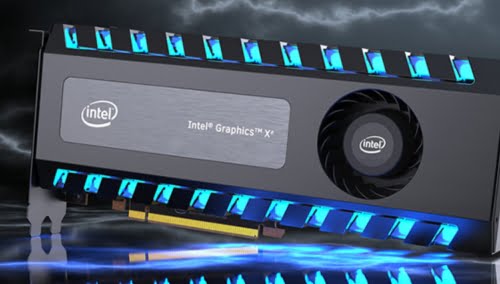Intel will present Xe HPG dedicated gaming GPUs this week, the chip giant is preparing its own alternative to NVIDIA and AMD solutions.
Intel has released a promotional video of its new discrete graphics architecture that it has been working on since Raja Koduri (former head of AMD’s Radeon Technologies group) took over the Core and Visual Computing Group division. The chip giant has returned to the high-end graphics segment 20 years later.
Intel will present Xe HPG dedicated gaming GPUs
Although we had already seen some of the work done in the new generation of integrated Gen12 what the industry and consumers are really waiting for is a dedicated graphics card that can be a real alternative to the duopoly. The company showed progress with the Iris Xe MAX for notebooks and the DG1 exclusively for system integrators.
This is where Intel Xe HPG (short for High-Performance Graphics) comes in, which under the codename “Scavenger Hunt.” The Intel Graphics teaser as any promotional video does not explain too much. The interesting thing is that it includes an easter egg that some clever people have discovered and that leads to a web page announcing the presentation of the card on March 26th.

What will the Intel Xe HPG look like?
There is very little official data. Kaduri recently promised that the card would be “20 times faster” than the 2012 Iris Pro 5200. That would put it alongside current GPUs like the NVIDIA RTX 3070 and AMD RX 6800 in terms of performance. More than enough to enter the dedicated market if Intel can guarantee stock and reasonable prices to put pressure on NVIDIA and AMD.
If the little information that has arrived so far, including the chip’s passage through the Geekbench testing site, is confirmed, this Intel Xe HPG would have 512 execution units, 4,096 shaders, and 16GB GDDR6 VRAM. The core’s working frequency would rise to 1,800MHz. There would be two other variants below it that would lower the execution units and included memory.
Intel Xe HPG (DG2) will be manufactured in 10 nm technology processes by TSMC and Samsung. Intel has the necessary IP to certify the card with DirectX 12 Ultimate, including ray tracing functions and we assume likewise for OpenGL and Vulkan. They will also have the variable frequency technologies for synchronizing images with monitors and a revamped software package for driver management and control of card parameters.
Intel‘s return to the dedicated graphics card market is very interesting. We do not know if from the beginning it will be able to compete with the best developments of NVIDIA and AMD, but it will cover the mid-range and entry-level for sure. We will see the final performance, production capacity, and prices. On Friday 26th we should know more details and we are going to follow the news closely for sure.





